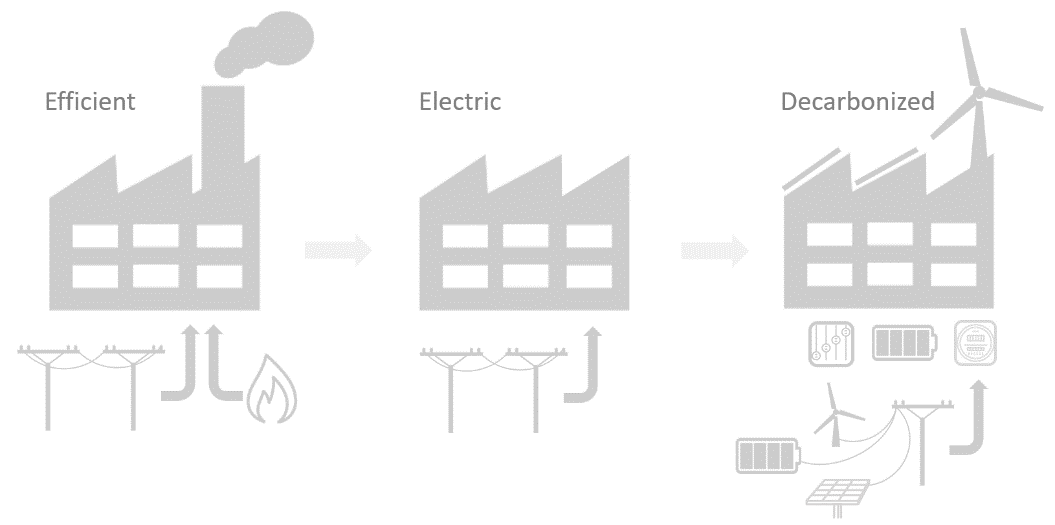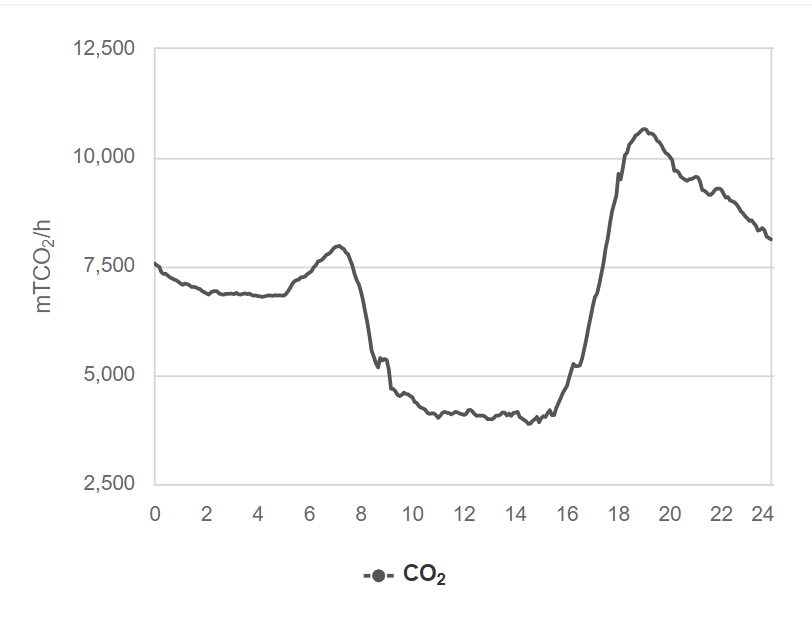As I began researching and writing this piece, a small banner on Regeneration.org gently reminded me that there were 2,999 days until 2030. 2,999 days seemed like plenty of time to apply the solutions needed to overcome the climate crisis. However, also open on my desktop was the 1965 report “Restoring the Quality of Our Environment” that was delivered to President Lyndon B. Johnson by his Science Advisory Committee. The report recognized that fossil fuel combustion contributes to climate change. That was more than 20,000 days ago. We’ve had over 55 years to make a course correction. 2,999 days suddenly felt like Thing One and Thing Two are still in the house and mother is pulling into the driveway.
With the limited time we have to curb environmental destruction, the biggest question for the building industry is where should we start? What exactly should we first do with our buildings to combat the climate crisis? At the top of many lists is building electrification, which means using electricity for heating, cooling, water heating, and cooking, as well as eliminating the use of fossil fuels for any of these uses.
Why Building Electrification?
Building electrification provides a pathway to eliminating fossil fuel use, which is responsible for 92% of total U.S. anthropogenic CO2 emissions. While building electrification by itself is not enough to achieve the needed CO2 emission reduction targets, it is one requirement among many other strategies we must implement if we’re going to reach our climate goals for 2030 and 2040. When combined with utility-scale decarbonization efforts, building electrification will make a big dent in global CO2 emissions.

So, how much of a difference do all-electric buildings make in reducing CO2 emissions? A study from the National Renewable Energy Laboratory (NREL), part of the U.S. Department of Energy, found that “electrification, in the absence of any additional power sector carbon policy, can result in 41% reductions (below 2005 level) in economy-wide fossil fuel combustion emissions.” When we combine all-electric buildings with a decarbonized grid, the reductions can reach up to 75% by 2050. This is a big deal. Municipalities need to rewrite building codes. Clients need to demand all-electric buildings. Design and construction teams need to deliver. And building electrification advocates need to keep advocating!
The Plan
Going all electric is a first step. From a design perspective, it’s important to make sure we don’t miss all the other critical opportunities to drive down CO2 emissions. The basics of the building electrification roadmap go something like this:
Create a policy to install all-electric systems in all retrofits and new construction. Eliminate fossil fuel-based systems from the design toolbelt.
Drive down energy use and overall demand so that every renewable electron that is consumed is used as efficiently as possible.
All-electric building systems will likely require heat pumps and other refrigerant containing equipment to produce heating and cooling. Natural and zero global warming potential (GWP) refrigerants are emerging in the market today to help mitigate the impact of potentially leaky refrigerant systems.
An all-electric building that is designed touse energy when the grid is delivering renewable energy can drive down operational carbon even farther. This kind of optimization is a team effort and involves integrated project teams that analyze building orientation, envelope strategies, on-site renewables and energy storage, EV charging, controls, and the dynamics of the regional grid over time.

When we use electricity matters. This graph above, which tracks hourly CO2 output on 10/15/2021 from the California regional grid, suggests cutting energy use from around 6 a.m. to 9 a.m. and again from 6 p.m. to 10 p.m. would help reduce CO2 emissions. Source: The California ISO
There are tons of resources out there to help teams decarbonize their projects and make the transition to all-electric buildings. New information seems to be emerging hourly and no single person can keep track of everything that’s going on out there! If you’re reading this, you’re now in my network so here’s a resource I highly recommend: “The Building Decarbonization Practice Guide” from the William J. Worthen Foundation, a nonprofit dedicated to advancing a climate positive future.
It’s also worth noting that there is a whole flock of health benefits that accompany building electrification. I will go into more detail on these health aspects in a future article so stay tuned. In the meantime, take a peek at RMI’s interactive map that dives into the health and cost impacts of burning fuels in buildings state-by-state.
As this article gets wrapped up, we only have 2,987 days left. Let’s get working. Together.
Join our email list to get the latest design innovations, technical content, new projects, and research from Henderson’s experts delivered straight to your inbox.